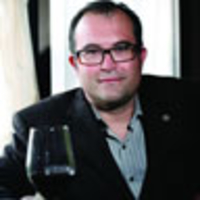
Some time ago, I walked into a mammoth wine cellar built under a rambling colonial house in an exclusive community near Philadelphia. My business that morning was to determine the value of its contents, a wine collection that numbered in the thousands upon thousands of bottles. Several hours of selected tastings and a detailed investigation of the cellar drew me to one conclusion: The wines—which the owner thought were worth more than a quarter million dollars—were all but worthless.
While letting the grapes remain on the vine creates wines with mass appeal, it affects wines on a fundamental chemical level.
I was sure the owner committed the cardinal sin of improperly storing his wine, and I smote him with all the fervor of a zealot. Read any respected wine book or talk to almost any sommelier, and one is offered the hallowed gospel of wine storage from which I was preaching from: Thou shalt store wines at 55 degrees Fahrenheit; thou shalt keep thy humidity at no less than 60 percent; thou shall permit no light nor any vibration to molest the wines; and thou shall build a vapor barrier lest your wines be blighted.
Soon after that inspection, though, I began to question my faith in the gospel. It started when I re-read one of the wine world's sacred texts: The Oxford Companion to Wine, by Jancis Robinson. In the Book, the definition of a “storing wine” was a collection of “ifs” and “the theory goes” and “a lack of scientfic research.” What did it mean that one of our greatest oracles was waffling?
“We developed our ideas from Europe. When you have wines at their source, say in the caves of Champagne, the wines are incredibly long lived, mostly because the temperatures do not fluctuate, not daily or seasonally. It's empirical, an attempt to replicate their origins.” explains Sandy Block, a certified Master of Wine, one of only 23 in America, and the vice president of beverage operations at Legal Seafood.
I wanted more facts, so I began scouring the scientific journals for papers relating to the aging of wines. Of the hundreds of scientific studies focused on wine, not a single one dealt with wines after they left the front door of the winery (save a few on the new screw-top fad).
Dr. Roger Boulton of the Department of Viticulture and Enology at University of California at Davis confirmed my suspicions:
“It's very frustrating, the studies are not being done because there is no one willing to fund them. There is simply no work being done on the chemistry of what happens to wine after it leaves the winery. In the absence of science, there is only anecdotes and opinion.”
It seems our truisms of proper wine storage are nothing more than inherited wisdom; they are beliefs passed down from generation to generation. Millions of dollars are spent on advancing the science of winemaking, but everything we are told about wine, how it will age and how to age it, is little more than an educated guess for most of us. Even those with the most well-trained palates cannot speak in absolutes.
“It's always a bit of a mysterious process” says Mr. Block.
The problem is not just in how to age wines, but if they will age well at all. While I am pretty sure that poor storage helped in the destruction of the aforementioned wine collection, the main culprit may be the wines themselves... despite the fact that all the major wine publications stated that those wines should have matured and developed for years.
“Wines are made differently than they were 20 years ago,” say Boulton. The reason is the technological revolution in wine-making that is under way. Winemakers and scientists have developed techniques that have resulted in a modern wine style that the majority of wine drinkers prefer—lush and big red wines with melting tannins. This style has been adopted worldwide, from Bordeaux to Napa Valley to Rioja and has been accomplished—in part—by a deceptively simple technique: letting the grapes remain on the vine much longer than they used to.
While this longer hang time creates wines with mass appeal, it affects wines on a fundamental chemical level. “pH levels were quite lower 20 years ago, worldwide. Our concern is that oxidation will be more rapid at these higher pH levels.” Boulton continues. pH may not be as sexy as tannins or fruit or acidity, but it determines how long a wine can develop before it degrades into what is basically vinegar.
Jim Adelman, the general manager at Au Bon Climat in California's Santa Barbara County, shares this concern. “Grapes that are less ripe have more acid and the pH is lower, this allows the wines to be stable for a lot longer, but it also takes longer for the wines to reach maturity. Aging is slower when the pH is low. Overripe wines go in the direction of sherry, lead toward a more oxidized wine.”
There is no way to judge how long or how well a wine will age based on how it tastes; it's a question of pH or the level of sulfur added to fix the wine (the only way to combat the negative effects of low pH in wine is a heavy dose of SO 2). Instead of a high Wine Spectator rating being the the litmus test for a wine, perhaps an actual litmus test is the better method to stock your wine cellar.
Will the question “when should I drink this wine” ever be answered?
“These studies will not get done,” says Boulton, “the industry organizations are poor and managed poorly, there is no consumer input into these sort of problems, and the industry doesn't think it's important enough to be done.”
Plus: Check out Hungry Beast for more news on the latest restaurants, hot chefs, and tasty recipes.
Keith Wallace is the founder of the Wine School of Philadelphia.






